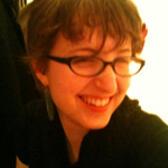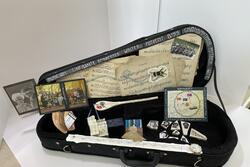What’s a Hebrew Priestess?
While some Jews may struggle to see the connection between their modern, fast-paced lives and traditional Jewish practices, Kohenet Sarah Shamirah Bechirah sees such links as natural. As a Hebrew Priestess and Jewish Meditation teacher, she puts treasured rituals in a fresh context.
I was eager to learn more about Shamirah’s journey to becoming a Hebrew Priestess, beginning long before her official ordination in July 2015 at the Kohenet Hebrew Priestess Institute.
Originally from Lexington, MA, Shamirah grew up leading services through the North American Federation of Temple Youth (NFTY). “I was really lucky to grow up in a youth movement that empowered people to lead services,” she explained. At an age when many viewed Judaism as “boring,” Shamirah learned how to make services relevant and fun while fitting the traditional service model.
During this time, the Imahot (adding the Torah’s women to the prayers) were added to the siddurim, but not before Shamirah and her NFTY friends included them in their own services, which was progressive for the time. “In terms of Jewish life, we’re in an age right now of anti-establishment for organizations. Jews are gathering in communities outside of synagogue walls as a direct result of their higher quality Jewish education,” she noted. These budding communities can lead themselves in innovative ways, making Judaism relevant to their personal practices.
While Shamirah’s Jewish leadership started at an early age, she found her calling as a Priestess after studying at Brandeis and participating in the independent minyan movement. Since her early twenties, Shamirah has considered herself an “inheritor of tradition” with a mission to “reinvent the Judaism of [her] time.” Shamirah has also been trained as a Jewish meditation and mindfulness teacher with the Institute for Jewish Spirituality. This enhances her work as a Priestess during services as she integrates Jewish chants and silence.
Today, Shamirah prays to G-d using feminine Hebrew grammar and will lead services, prayers and blessings in the feminine. She describes this as part of her personal “evolution,” though not required of a Priestess.
So what exactly does it mean to be a Hebrew Priestess? Kohanot are trained in communal roles that support men and women in their Jewish communities. They take on many different roles, from officiating weddings and baby namings to guiding individuals in need of support. While both clergy, Rabbis and Kohanot lead and in very different ways, and some may see becoming a Kohenet as a departure from the patriarchal leadership system. Many women in their 40s and 50s within the Conservative movement did not have the opportunity to become Rabbis and enroll in the program as an alternative. Still others, see them as completely different roles and courses of study from that of a Rabbi. The Kohenet program also accepts a wide variety of women from various backgrounds and levels of Hebrew language comprehension.
During her time as an educator at the Isabella Freedman Jewish Retreat Center in Connecticut, home of the Jewish farming program Adamah, there was no official Rabbi or Shul community. In addition to leading services, she helped the community to “take Judaism into our own hands and allow it to evolve.” Shamirah initiated and inspired new rituals connecting Judaism and nature. “Jewish tradition isn’t as relevant to people [now] because it’s so centered on the natural rhythms of the Middle East. It has also become an indoor religion since Jews were not allowed to own land for so many centuries.” Shamirah designed a gathering ritual in honor of the first maple syrup of the season at Isabella Freedman. After tasting last year’s syrup, farmers tap the tree while reciting blessings over this significant moment. In celebration, the group sings and connects over their own vitality and “cup running over” like that of a tapped maple tree (visit Ritual Well for an overview of this ritual).
To learn more about Hebrew Priestesses, Kohenet Shamirah encourages you to explore the Kohenet website and attend an event led by a Priestess. If becoming a Kohenet and reinventing Judaism for others is of interest to you, there are also online courses available, or you can join the next cohort of Priestesses this August. All levels of Jewish education are welcome to apply.








I’m interested, do you ordain Transwomen?
In reply to I’m interested, do you… by Marissa Hall
Yes, they do.
A couple of years ago I found out that I've been 5% Jewish (Ashkenaz), & that my dad was not Hispanic, but actually Western European from West Israel. I'm a Christian, but even Jesus was Jewish. Therefore, I feel I should know about Judaism, to have a deeper knowledge of what I already believe. Do I need to know how to speak Hebrew? I want to learn anyway & I'm a Chaplain. But now that I learned that I'm from the tribe of Levi,I'm interested to learn more about what you do & see if it's something of been led to do. Thank you for your help& knowledge.
Do you have any groups on the UK or Israel?
I have Jewish ancestry and have been to Israel. I I am very interested in learning more about my family's history.
Thank you,
Annette